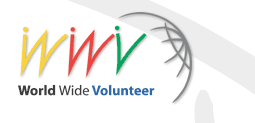Report (Part 3): Third World Summit on the Internet and Multimedia09 October 2002 © ICVolunteers and Swissmedia, Montreux, Switzerland Contents
Special Workshop on Software Applications and Development: Using Wireless Technologies for DevelopmentTime: 10 October 2002, 10:00-12:00 Location: A 450 Chair: Eduardo Da Costa (CEO, NestBoston, Brazil) Presenters/ Participants: Jean Barrette (General Manager, Equity and R&D, Bell Mobility, Canada) The introduction of any technology breeds new and original usage, usage that reflects the basic needs and whims of given populations wherever they may be live. This is especially true with the wireless communication tools and applications that have become very popular means of exchanging information and data of all sort. SMS is very popular in Asia and South America, I-mode has a faithful following in Japan and would like to conquer Europe, WAP applications are gaining grounds in certain countries of the world and 3G, in a few years time will certainly be adopted worldwide as the wireless technology par excellence to communicate and transact. This session focused on wireless usage as it is known today. Moderator Mr. Daniel Kaplan (Director General, Fondation Internet Nouvelle Génératon, France) opened the workshop by pointing out that wireless technology has recently become a tricky concept, as the boundaries between fixed and wireless have blurred. Developing countries have rapidly embraced mobile phones, skipping entirely over fixed communications (land lines), which are often costly to install. Satellite and other fixed mobile technologies such as third generation mobile (3G) are more and more common. However, wireless technologies were initially presented as a way of accelerating information transfer, but with the exception of mobile phones, have not done so. Mr. Jean Barrette, General Manager of Equity and R&D of Bell Mobility, Canada, presented information about the use of wireless technologies from the North American perspective. He showed data from the Cellular Telecommunications & Internet Association (CTIA) surveys, which show that 39% of mobile phone calls in North America are made from a vehicle. The greatest uses of mobile phones in North America are for personal reasons (35%) and for personal safety/security reasons (34%). Contrary to what was expected of mobile technology a few years ago, the amount of revenue derived from data transmission is negligible, and 60% of that data transmission is for entertainment. As Mr. Barrette emphasized, "Voice Is King" in North America: it provides 95% of the revenue for mobile suppliers. Further, Mr. Barrette pointed out that there are various factors to determine mobile technology usage in any location: social/cultural/geographic factors, demographic/wealth factors, substitution and regulatory factors. Mr. Bertil Thorngren, Professor of the Swedish School of Economics, Sweden, spoke about the use of mobile technology in Europe and worldwide. He first emphasized the fact that most users are neither "completely fixed" nor "completely mobile" and often prefer different options for completing different tasks: they choose a mix of fixed and mobile solutions. In Europe, many people use prepaid cards for mobile phones, because it allows them to use a telephone anonymously. In fact, 80% of mobile phone users in Southern Europe use prepaid cards, stressed Mr. Thorngren. The use of Short Message Service (SMS) is also increasing in Europe, because it is cheaper than voice. SMS has not become very popular in the United States, primarily because providers do not cooperate with each other, he added. Mr. Thorngren also emphasized the rising usage of Wi-Fi [short for wireless fidelity, a high-frequency wireless local area network (WLAN)], especially in Japan and China. Mr. Hassan Amor, President of the "Association des professionels des technologies de l'Information", Morocco, the provided an overview of mobile technology usage in Morocco. The mobile phone was introduced in Morocco in 1994 during a GATT conference hosted in Morocco. For the first four years, mobile phones were a very expensive technology, reserved only for the elite. Then in 1997, Morocco's telecom regulation system was privatized. An independent regulation body was formed that aims to regulate the telecom sector and encourage healthy competition between players. This move towards liberalization caused the number of mobile phone subscribers to jump from 100,000 in 1997 to six million in 2002 (20% of the total population). Mobile phones also transformed from a technology for the elite, to a technology for the masses. Mr. Amor presented some interesting statistics with respect to the "democratization" of the mobile phone in Morocco:
Mr. Amor concluded that the liberalization and democratization of the telecom system was good for both the government (who received US$ 3.5 million) and the users. Wireless technologies became accessible for all, even the marginalized of society. ConclusionSpeakers from Canada, Sweden, Morocco spoke of the present use of wireless technologies. It appeared that in Europe and North America wireless technology is used together with fixed phone lines. The percentage of private conversations in these places is high, whereas in some developing countries mobile phones are often the only means of communications. Morocco is a good example for this: 20% of the population has a wireless telephone. Posted: 2002-10-09 Updated: 2010-1-05 | ||








